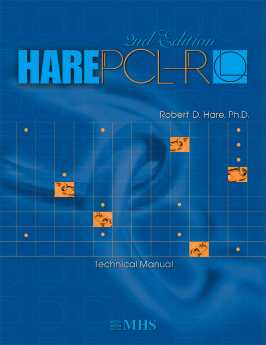Related Research Articles
Adjustment disorder is a maladaptive response to a psychosocial stressor. It is classified as a mental disorder. The maladaptive response usually involves otherwise normal emotional and behavioral reactions that manifest more intensely than usual, causing marked distress, preoccupation with the stressor and its consequences, and functional impairment.

Perfectionism, in psychology, is a broad personality trait characterized by a person's concern with striving for flawlessness and perfection and is accompanied by critical self-evaluations and concerns regarding others' evaluations. It is best conceptualized as a multidimensional and multilayered personality characteristic, and initially some psychologists thought that there were many positive and negative aspects.
The Beck Depression Inventory, created by Aaron T. Beck, is a 21-question multiple-choice self-report inventory, one of the most widely used psychometric tests for measuring the severity of depression. Its development marked a shift among mental health professionals, who had until then, viewed depression from a psychodynamic perspective, instead of it being rooted in the patient's own thoughts.

Suicide prevention is a collection of efforts to reduce the risk of suicide. Suicide is often preventable, and the efforts to prevent it may occur at the individual, relationship, community, and society level. Suicide is a serious public health problem that can have long-lasting effects on individuals, families, and communities. Preventing suicide requires strategies at all levels of society. This includes prevention and protective strategies for individuals, families, and communities. Suicide can be prevented by learning the warning signs, promoting prevention and resilience, and committing to social change.
Suicide intervention is a direct effort to prevent a person or persons from attempting to take their own life or lives intentionally.

Suicidal ideation, or suicidal thoughts, is the thought process of having ideas, or ruminations about the possibility of ending one's own life. It is not a diagnosis but is a symptom of some mental disorders, use of certain psychoactive drugs, and can also occur in response to adverse life events without the presence of a mental disorder.
Suicide risk assessment is a process of estimating the likelihood for a person to attempt or die by suicide. The goal of a thorough risk assessment is to learn about the circumstances of an individual person with regard to suicide, including warning signs, risk factors, and protective factors. Risk for suicide is re-evaluated throughout the course of care to assess the patient's response to personal situational changes and clinical interventions. Accurate and defensible risk assessment requires a clinician to integrate a clinical judgment with the latest evidence-based practice, although accurate prediction of low base rate events, such as suicide, is inherently difficult and prone to false positives.
A suicide crisis, suicidal crisis or potential suicide is a situation in which a person is attempting to kill themselves or is seriously contemplating or planning to do so. It is considered by public safety authorities, medical practice, and emergency services to be a medical emergency, requiring immediate suicide intervention and emergency medical treatment. Suicidal presentations occur when an individual faces an emotional, physical, or social problem they feel they cannot overcome and considers suicide to be a solution. Clinicians usually attempt to re-frame suicidal crises, point out that suicide is not a solution and help the individual identify and solve or tolerate the problems.

The Psychopathy Checklist or Hare Psychopathy Checklist-Revised, now the Psychopathy Checklist—revised (PCL-R), is a psychological assessment tool that is commonly used to assess the presence and extent of the personality trait psychopathy in individuals—most often those institutionalized in the criminal justice system—and to differentiate those high in this trait from those with antisocial personality disorder, a related diagnosable disorder. It is a 20-item inventory of perceived personality traits and recorded behaviors, intended to be completed on the basis of a semi-structured interview along with a review of "collateral information" such as official records. The psychopath tends to display a constellation or combination of high narcissistic, borderline, and antisocial personality disorder traits, which includes superficial charm, charisma/attractiveness, sexual seductiveness and promiscuity, affective instability, suicidality, lack of empathy, feelings of emptiness, self-harm, and splitting. In addition, sadistic and paranoid traits are usually also present.

Suicide is the act of intentionally causing one's own death. Mental disorders, physical disorders, and substance abuse are risk factors. Some suicides are impulsive acts due to stress, relationship problems, or harassment and bullying. Those who have previously attempted suicide are at a higher risk for future attempts. Effective suicide prevention efforts include limiting access to methods of suicide such as firearms, drugs, and poisons; treating mental disorders and substance abuse; careful media reporting about suicide; and improving economic conditions. Although crisis hotlines are common resources, their effectiveness has not been well studied.

Major depressive disorder, often simply referred to as depression, is a mental disorder characterized by prolonged unhappiness or irritability. It is accompanied by a constellation of somatic and cognitive signs and symptoms such as fatigue, apathy, sleep problems, loss of appetite, loss of engagement, low self-regard/worthlessness, difficulty concentrating or indecisiveness, or recurrent thoughts of death or suicide.

IS PATH WARM? is an acronym utilized as a mnemonic device. It was created by the American Association of Suicidology to help counselors and the general public "remember the warning signs of suicide."
The Columbia Suicide Severity Rating Scale, or C-SSRS, is a suicidal ideation and behavior rating scale created by researchers at Columbia University, University of Pennsylvania, University of Pittsburgh and New York University to evaluate suicide risk. It rates an individual's degree of suicidal ideation on a scale, ranging from "wish to be dead" to "active suicidal ideation with specific plan and intent and behaviors." Questions are phrased for use in an interview format, but the C-SSRS may be completed as a self-report measure if necessary. The scale identifies specific behaviors which may be indicative of an individual's intent to kill oneself. An individual exhibiting even a single behavior identified by the scale was 8 to 10 times more likely to die by suicide.
Research on seasonal effects on suicide rates suggests that the prevalence of suicide is greatest during the late spring and early summer months, despite the common belief that suicide rates peak during the cold and dark months of the winter season.
The relationship between antidepressant use and suicide risk is a subject of medical research and has faced varying levels of debate. This problem was thought to be serious enough to warrant intervention by the U.S. Food and Drug Administration to label greater likelihood of suicide as a risk of using antidepressants. Some studies have shown that the use of certain antidepressants correlate with an increased risk of suicide in some patients relative to other antidepressants. However, these conclusions have faced considerable scrutiny and disagreement: A multinational European study indicated that antidepressants decrease risk of suicide at the population level, and other reviews of antidepressant use claim that there is not enough data to indicate antidepressant use increases risk of suicide.
The Children's Depression Inventory is a psychological assessment that rates the severity of symptoms related to depression or dysthymic disorder in children and adolescents. The CDI is a 27-item scale that is self-rated and symptom-oriented. The assessment is now in its second edition. The 27 items on the assessment are grouped into five major factor areas. Clients rate themselves based on how they feel and think, with each statement being identified with a rating from 0 to 2. The CDI was developed by American clinical psychologist Maria Kovacs, PhD, and was published in 1979. It was developed by using the Beck Depression Inventory (BDI) of 1967 for adults as a model. The CDI is a widely used and accepted assessment for the severity of depressive symptoms in children and youth, with high reliability. It also has a well-established validity using a variety of different techniques, and good psychometric properties. The CDI is a "Level B test," which means that the test is somewhat complex to administer and score, with the administrator requiring training.

Igor Galynker is an American psychiatrist, clinician and researcher. His research interests include bipolar disorder, suicide prevention, and the role of family dynamics in psychiatric illness. He has published on these topics both in professional journals and in the lay press. His recent research has been devoted to describing Suicide Crisis Syndrome (SCS), an acute suicidal cognitive-affective state predictive of imminent suicidal behavior.
The Suicide Behaviors Questionnaire-Revised (SBQ-R) is a psychological self-report questionnaire designed to identify risk factors for suicide in children and adolescents between ages 13 and 18. The four-question test is filled out by the child and takes approximately five minutes to complete. The questionnaire has been found to be reliable and valid in recent studies. One study demonstrated that the SBQ-R had high internal consistency with a sample of university students. However, another body of research, which evaluated some of the most commonly used tools for assessing suicidal thoughts and behaviors in college-aged students, found that the SBQ-R and suicide assessment tools in general have very little overlap between them. One of the greatest strengths of the SBQ-R is that, unlike some other tools commonly used for suicidality assessment, it asks about future anticipation of suicidal thoughts or behaviors as well as past and present ones and includes a question about lifetime suicidal ideation, plans to commit suicide, and actual attempts.
In colleges and universities in the United States, suicide is one of the most common causes of death among students. Each year, approximately 24,000 college students attempt suicide while 1,100 students succeed in their attempt, making suicide the second-leading cause of death among U.S. college students. Roughly 12% of college students report the occurrence of suicide ideation during their first four years in college, with 2.6% percent reporting persistent suicide ideation. 65% of college students reported that they knew someone who has either attempted or died by suicide, showing that the majority of students on college campuses are exposed to suicide or suicidal attempts.
References
- ↑ Patterson, WM; Dohn, HH; Bird, J; Patterson, GA (April 1983). "Evaluation of suicidal patients: the SAD PERSONS scale". Psychosomatics. 24 (4): 343–5, 348–9. doi: 10.1016/S0033-3182(83)73213-5 . PMID 6867245.
- ↑ Bolton, James M.; Spiwak, Rae; Sareen, Jitender (15 June 2012). "Predicting Suicide Attempts With the SAD PERSONS Scale". The Journal of Clinical Psychiatry. 73 (6): e735–e741. doi:10.4088/JCP.11m07362. PMID 22795212. S2CID 556589.
- ↑ Saunders, K.; Brand, F.; Lascelles, K.; Hawton, K. (29 July 2013). "The sad truth about the SADPERSONS Scale: an evaluation of its clinical utility in self-harm patients". Emergency Medicine Journal. 31 (10): 796–798. doi:10.1136/emermed-2013-202781. PMID 23896589. S2CID 29091285.
- ↑ M. Birnbaumer, Diane. "A Sad Performance by the SADPERSONS Scale". NEJM Journal Watch. Massachusetts Medical Society. Retrieved 8 August 2013.
- ↑ Harris, K. M.; Syu, J.-J.; Lello, O. D.; Chew, Y. L. E.; Willcox, C. H.; Ho, R. H. M.; Tran, U. S. (2015). "The ABC's of Suicide Risk Assessment: Applying a Tripartite Approach to Individual Evaluations". PLOS ONE. 10 (6): e0127442. Bibcode:2015PLoSO..1027442H. doi: 10.1371/journal.pone.0127442 . PMC 4452484 . PMID 26030590.
- ↑ Oxford Handbook of Emergency Medicine. Third Edition. Page 609.